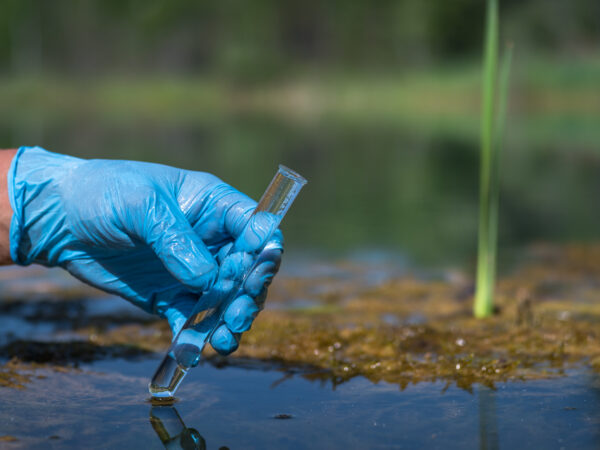
Rolling back clean water protection, gutting agencies and defunding science, research and monitoring is a non-starter for the Great Lakes region, says Ann Arbor environmental advocate Laura Rubin.
She was reacting to the new U.S. Environmental Protection Agency (EPA) administrator Lee Zeldin’s recently released economy-oriented plan for the agency under President Donald Trump.
Rubin directs the non-profit Healing Our Waters coalition whose primary mission since 2004 has been to secure federal funding for Great Lakes restoration.
In a recent interview with Great Lakes Now, Rubin expressed concern about the EPA’s direction, questioned whether the Great Lakes region has a water conservation ethic, and put a spotlight on the region’s intransigence toward groundwater.
Five Pillars
The Trump EPA has five priorities — pillars — including permitting reform that “will incentivize investment into our economy and create American jobs.” To restore and protect the American auto industry by streamlining and developing smart regulations while “restoring American energy dominance” and making the United States the Artificial Intelligence Capital of the World.
Only the first pillar mentions anything about the environment with: “Clean Air, Land, and Water for Every American.” Absent is any mention of climate change, or the massive amount of water required to operate data centers that support artificial intelligence development.
Rubin’s take on the five “pillars” plan is that it’s more about economic development than environmental protection. She cautioned that “we need to know that economic development will go hand in hand with the environment.”
That climate change wasn’t mentioned is no surprise, as Trump campaigned on removing the U.S. from the Paris Climate Agreement, and signed an executive order making it official shortly after his inauguration. He took similar action after taking office in 2017.
Rubin said even with the federal government on the sidelines, the Great Lakes region can still act on climate issues.
“No matter one’s political affiliation, it’s hard to not see the changes in our weather,” Rubin said, citing the intensity of hurricanes, wildfires, severe flooding in urban areas of the Great Lakes region, and Canadian wildfires that affect air quality.
She pointed to resilience efforts at the state and local level that can facilitate adaptation to extreme climate events. And both, she said, may have climate goals and the ability to act on their own citing financial incentives for solar panels as an example.
While not related to climate, Rubin referred to Michigan’s role in PFAS monitoring as an example where a state can act absent the federal government.
Given the Trump EPA’s focus on economic development, Great Lakes Now asked the Michigan Chamber of Commerce to comment on the EPA’s Five pillars, specifically the pillar pertaining to restoring the American auto industry.
Ford Motor Company’s net earnings were $5.9 billion in 2024 and autoworkers received over $10,000 in profit sharing. GM reported similar results.
“The Michigan Chamber appreciates the stated focus and pillars on protecting the environment and our people and communities while advancing economic growth and opportunity. Those two things mustn’t be in inherent conflict,” said Mike Alaimo, the Chamber’s senior director of legislative and external affairs.
Alaimo didn’t address the EPA’s plans to restore the American auto industry, instead saying: “modernizing our industrial base and manufacturing supply chains are critical to both growing our economy and creating a more sustainable future.”
The EPA did not respond to a Great Lakes Now request to comment on the five “pillars.”
Water conservation ethic
That Michigan and the Great Lakes region have a vast supply of water is an understatement and increasingly water is used as an economic development tool. Rubin cited Michigan’s desire to attract data centers as an example.
“A single large data center can use as much water as thousands of homes, or equivalent to a city,” Carrie Jennings, research and policy director at the nonprofit Freshwater, recently told MPRNEWS.
Great Lakes Now asked Rubin if the Great Lakes region has a water conservation ethic, or if it has a “we’ve got it let’s use it to our advantage” mentality.
“Unfortunately, I don’t think we have a strong conservation ethic,” Rubin said. “It’s difficult because people look at the Great Lakes and see huge bodies of water. So it’s hard to get people to think about water conservation, except for financial reasons.”
Rubin said the lack of a conservation ethic is something the region has to overcome because even with its vast water resources, the supply isn’t infinite.
Groundwater is a mystery
Groundwater in Michigan is plentiful to the point that it is the rough equivalent of the volume of Lake Huron. But it is marginally monitored, and previously Rubin told Great Lakes Now that “groundwater supply in the Great Lakes region is a mystery” due to a lack of attention paid to it.
“Groundwater is a hard topic for the public because groundwater isn’t seen and people don’t have an interaction with it,” Rubin said. “Communities who don’t rely on groundwater for drinking water don’t see the point in caring about it, protecting it or paying for it.”
So how to get the attention of elected officials, agency heads, water managers and business entities on the seriousness of groundwater depletion?
“It will be disaster-driven,” Rubin said.
You will have drinking water supplies that are either depleted or become too saline — salty — or too contaminated. And depleted groundwater will impact lakes and rivers, according to Rubin who said, “those are the kind of things that will spur the interest on research and monitoring.”
Great Lakes Now asked if the time is right for advocates to launch a groundwater awareness campaign, similar to the campaign that led to the Great Lakes Compact that minimizes the threat of large-scale water diversions.
Rubin said now is not the time for a large-scale campaign given the current political winds.
“We’re in the position of defending the wins that the region has had,’” Rubin said.
Restoration is not enough
Given her role of advocating for the federal Great Lakes restoration program, Rubin mentioned that the multi-decade, multi-billion dollar program has consistently had bi-partisan support.
She and colleagues recently expressed optimism, as reported by the Toledo Blade, that the program will continue under the Trump EPA. They also noted that vice-president J.D. Vance, when in the senate, supported Great Lakes programs.
“But one of the challenges is, even if we get bi-partisan support for Great Lakes restoration, we know that’s not enough. We need Congress to support other vital programs,” Rubin said.
The Trump EPA recently announced staff cuts at the agency’s Chicago office that oversees Great Lakes programs. That was followed by cancellation of contracts valued at nearly $60 million, the EPA said in a release. The contracts were not specific to the Great Lakes region.
“The cancelled contracts represent $59,776,673.70 saved from wasteful DEI and environmental justice initiatives,” the EPA said.
“We’re disappointed that EPA pulled the grants that prioritize helping the places and communities hit hardest by pollution,” Rubin said.
“Nobody should live with pollution. It’s a good use of tax dollars to ensure federal resources are prioritizing the areas that are facing the biggest restoration needs.”
Catch more news at Great Lakes Now:
Trump’s aggressive water statement riles, unites Canadians
Spotlight on complexity of bottled water issues, as BlueTriton exits Ontario
Featured image: Laura Rubin. (Photo Credit: Mouradian via Laura Rubin)




